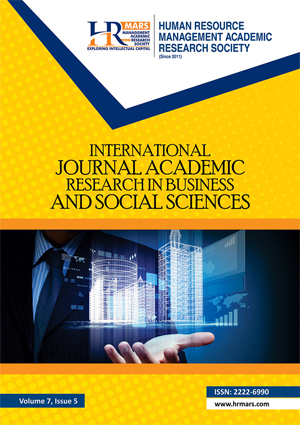The National Defence University of Malaysia offers a unique medical curriculum, which combines medical syllabus and military training. Medical student’s perception on educational environment offers further insights into students learning needs and improvement of the medical curriculum. This study is to determine the perceptions of the NDUM medical students towards their educational environment. This is a cross sectional study. The Dundee Ready Educational Environment Measure (Dreem) inventory was distributed to 189 students during the 2015-2016 academic years. The inventory consists of 50 items; scored on a 0-4 likert scale. It has five subdomains including students’ perceptions of: learning, teaching, atmosphere, academic self-perceptions, and social self-perceptions with maximum scores of 200. The response rate was 79.1% (cadets (73.08%) vs civilian (26.92%). The total DREEM score was 138.16/200 (69.3%). Students’ perceptions of: learning, teachers, academic self-perceptions, atmosphere and social self-perceptions scores were 33.34/48(69.4%), 32.6/44(74%), 22.17/32(69.2%), 32.68/48(68%) and 18.02/28(64.3%) respectively. The highest score was “The teachers are knowledgeable” (3.75). The lowest score was “The teaching overemphasizes factual learning” (1.31). Students most preferred learning method was study group (84.1%) while the least preferred learning method was e-learning (12.1%).Medical students in this university have positive perceptions with their educational environment. Some low scoring areas indicate that the learning environment need to be improved. This information may assist the faculty in strategic planning of medical curriculum and sustaining a high quality educational environment for the students. Further research on educational environment is vital in ensuring continuous quality in the academic curriculum.
Al-Hazimi, A., Zaini, R., Al-Hyiani, A., Hassan, N., Gunaid, A., Ponnamperuma, G. Davis, M. (2004). Educational environment in traditional and innovative medical schools: a study in four undergraduate medical schools. Education for Health (Abingdon, England), 17(2), 192–203. doi:10.1080/13576280410001711003
Al-Naggar, R. A., Abdulghani, M., Osman, M. T., Al-Kubaisy, W., Daher, A. M., Nor Aripin, K. N. B., Bobryshev, Y. V. (2014). The Malaysia DREEM: perceptions of medical students about the learning environment in a medical school in Malaysia. Advances in Medical Education and Practice, 5, 177–184. http://doi.org/10.2147/AMEP.S61805
Bassaw, B., Roff, S., McAleer, S., Roopnarinesingh, S., De Lisle, J., Teelucksingh, S., & Gopaul, S. (2003). Students’ perspectives on the educational environment, Faculty of Medical Sciences, Trinidad. Medical Teacher, 25(5), 522–6. doi:10.1080/0142159031000137409
Belayachi, J., Razine, R., Boufars, A., Saadi, A., Madani, N., Chaouir, S., & Abouqal, R. (2015). Moroccan medical students’ perceptions of their educational environment. Journal of Educational Evaluation for Health Professions, 12, 47. http://doi.org/10.3352/jeehp.2015.12.47
Demirören, M., Palaoglu, O., Kemahli, S., Ozyurda, F., & Ayhan, I. H. (2008). Perceptions of students in different phases of medical education of educational environment: ankara university faculty of medicine. Medical Education Online, 13, 8. doi:10.3885/meo.2008.Res00267
Dent, J., & Harden, R. M. (2009). A Practical Guide for Medical Teachers (3rd ed.). Amsterdam: Elsevier Health Sciences.
Fleming, N.D. & Mills, C. (1992). Not Another Inventory, Rather a Catalyst for Reflection. To Improve the Academy, 11:137-155.
Lizzio, A., Wilson, K., & Simons, R. (2002). University Students’ Perceptions of the Learning Environment and Academic Outcomes: Implications for theory and practice. Studies in Higher Education, 27(1), 27–52. doi:10.1080/0307507012009935
Hong, K.-S., Lai, K.-W., & Holton, D. (2003). Students’ Satisfaction and Perceived Learning with a Web-based Course. Educational Technology & Society, 6(1), 116–124.
Mayya, S., & Roff, S. (2004). Students’ perceptions of educational environment: a comparison of academic achievers and under-achievers at kasturba medical college, India. Education for Health (Abingdon, England), 17(3), 280–91. doi:10.1080/13576280400002445
McAleer, Sue Roff, S. (2001). What is educational climate? Medical Teacher, 23(4), 333–334. doi:10.1080/0142159012006332
Newble, D. I., & Cannon, R. A. (2001). A Handbook for Medical Teachers (4th ed.). Dordrecht: Kluwer Academic Publishers.
Rahman, N. I. A., Aziz, A. A., Zulkifli, Z., Haj, M. A., Mohd Nasir, F. H. B., Pergalathan, S., … Haque, M. (2015). Perceptions of students in different phases of medical education of the educational environment: Universiti Sultan Zainal Abidin. Advances in Medical Education and Practice, 6, 211–222. http://doi.org/10.2147/AMEP.S78838
Rana, R. K., Kumar, S., Kumar, A., Roy, V., & Roy, C. (2013). Analyzing the Dreams Coming True for Young Undergraduates of DMCH, Laherisarai ,Darbhanga using DREEM Score. International Journal of Recent Trends in Science And Technology, 6(2), 60–63.
Roff, S., McAleer, S., Harden, R. M., Al-Qahtani, M., Ahmed, A. U., Deza, H., … Primparyon, P. (1997). Development and validation of the Dundee Ready Education Environment Measure (DREEM). Medical Teacher, 19(4), 295–299. doi:10.3109/01421599709034208
Roff, S. (2005a). Education environment: a bibliography. Medical Teacher, 27(4), 353–7. doi:10.1080/01421590500151039
Roff, S. (2005b). The Dundee Ready Educational Environment Measure (DREEM)—a generic instrument for measuring students’ perceptions of undergraduate health professions curricula. Medical Teacher, 27(4), 322–325. doi:10.1080/01421590500151054
Stephen, M. Rybczynski and Elisabeth E. Schussler. (2011).Student Use of Out-of-Class Study Groups in an Introductory Undergraduate Biology Course. Life Sciences Education 10
In-Text Citation: (Jaffar, Hassan, Lugova, Manickam, & Feizal, 2019)
To Cite this Article: Jaffar, A., Hassan, H. A., Lugova, H., Manickam, M., & Feizal, V. (2019). Evaluating Medical Students’ Perceptions of the Educational Environment at the National Defense University of Malaysia. International Journal of Academic Research Business and Social Sciences, 9(1), 802–815.
